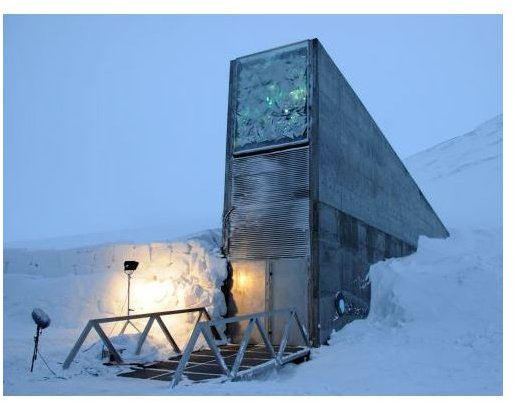Seed Banks and the Storage of seeds and plant genetic material
Plant genetic resources are the raw materials for countless researches involving, among others, food, medicine, and fuel. They provide genes that are used for improving existing crops, as well as for developing new treatments for various diseases. The preservation of plant diversity is high on the priority of conservationists, plant breeders and medical researchers alike. How then are these important resources stored and preserved?
Collections of individual plants, genera, species, subspecies and varieties exist for the specific purpose of protecting and storing them. Several strata of preservation range from small field plots on farmers’ fields to internationally-funded facilities equipped with the latest technology.
Living Collections
Small farms that depend on native crops are excellent sites for preserving varieties that are specifically adapted to the local environment. Often, the differences among these varieties are very slight, yet as a group, they are a good source of genes for adaptive traits like pest and disease resistance. These collections are best managed jointly by the local community and agricultural institutions that provide guidance with minimal interference.
Botanical parks have been established not just to beautify but also to protect living plant specimens. By providing a protected environment for various species to thrive in, these gardens help to ensure that the plants within their boundaries will survive.
Crop- and Country-Specific Seed Banks
Many institutions dedicated to specific crops maintain their own seed banks. Examples of these are the International Maize and Wheat Improvement Center (CIMMYT) and the International Rice Research Institute (IRRI). Both organizations collect samples of seeds from all over the world, preserve them in controlled environments, propagate them as necessary and provide seeds for other scientific institutions.
Many countries also operate their own germplasm collections. For some, the aim is simply to preserve the base of their agricultural industries, and protect it against a catastrophic loss. In the U.S., this task falls under the auspices of the National Center for Genetic Resources Preservation (NCGRP), which manages the Plant Genetic Resources Preservation Program for the U.S. Department of Agriculture.
International Repositories

Seed banks also exist for the preservation of plant diversity per se, regardless of whether the plants are cultivated or not. Many countries have worked together to establish these international repositories of plant genetic resources. These sites obtain duplicate samples from other institutions and store them in dedicated facilities. The Millennium Seed Bank Project and the Svalbard Global Seed Vault are examples of these cooperative endeavors, both of which act as backups for traditional gene banks.
The Millennium Seed Bank Project was established in 2000 and is managed by the Royal Botanic Gardens in Kew. The aim of the project is to collect specimens and data from more than 24,000 plant species worldwide.
The Svalbard Global Seed Vault is located under the permafrost on the island of Spitsbergen in Norway. Its precursor, the Nordic Gene Bank, began storing seeds in 1984. The larger seed vault was officially opened in 2008, under the management of the Nordic Genetic Resource Center (NORDGEN). The site is ideal because of the low temperatures, necessary for the long-term storage of seeds, and for the lack of tectonic activity in the area.